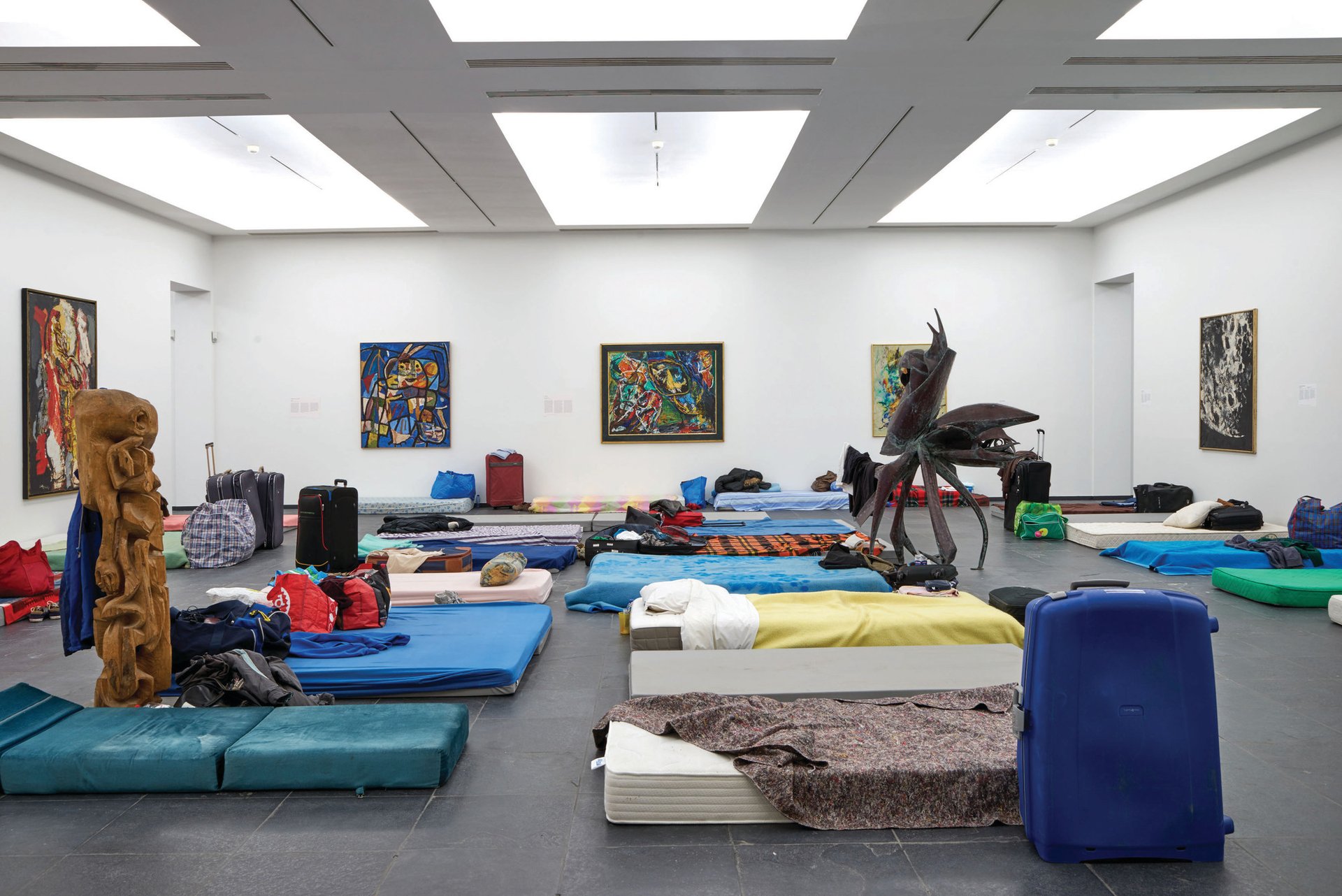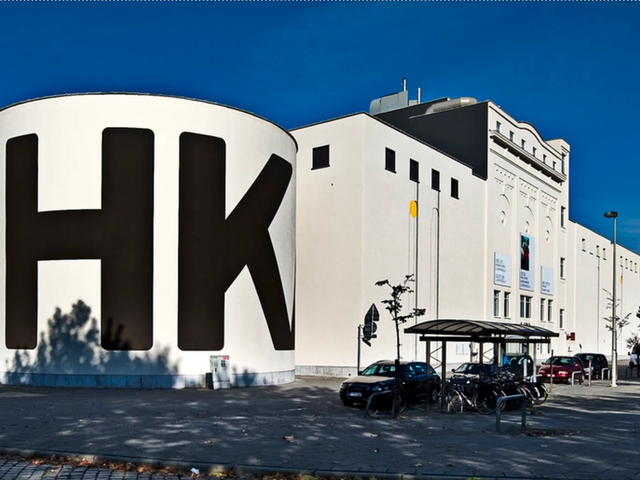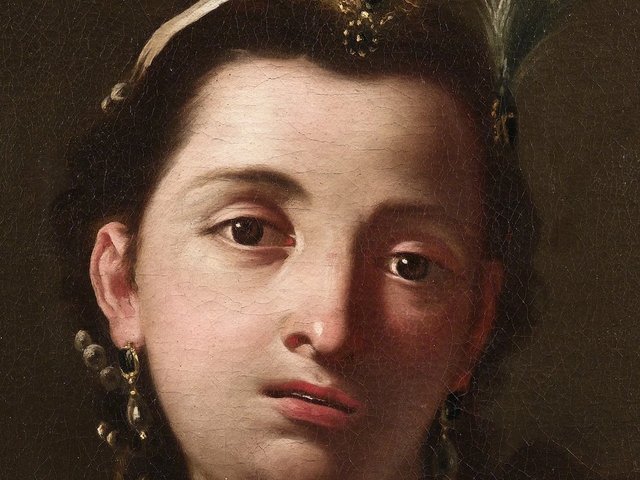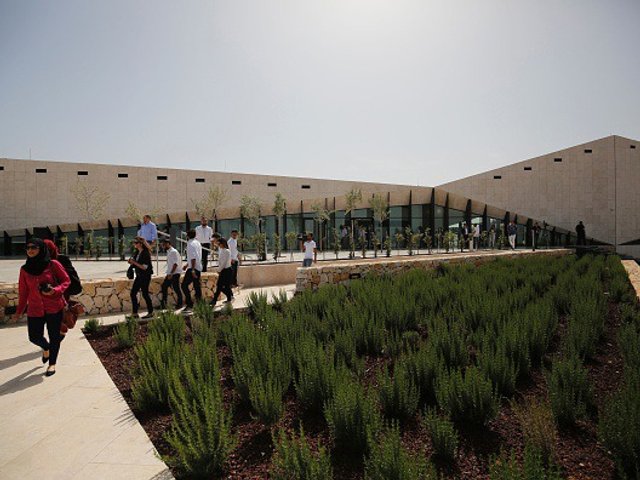Christoph Büchel is the latest artist to focus on the issue of migration. But the project—which includes accommodating 12 refugees at S.M.A.K. (the Municipal Museum for Contemporary Art) in Ghent, Belgium—has, until now, remained under the radar. A refugee camp has been constructed in the grounds of the museum, resembling the infamous former Jungle site in Calais, as part of an exhibition organised by the Swiss artist (Verlust der Mitte, until 27 August).
In the show, visitors first encounter rooms dedicated to art by the Cobra group of painters, among other schools, filled with mattresses and containing belongings such as clothing and luggage that reflect the experiences of different migrants. Publicity-averse Büchel has selected the Cobra works on display, along with Pop art and Minimalist works. “There is a friction between art and reality, which suddenly slides into the museum,” says Philippe van Cauteren, S.M.A.K.’s artistic director.
Meanwhile, the 12 refugees live and work in the museum. “They come from Syria, Iraq, Somalia and Afghanistan. Not only do they reside in the museum, but in the community centre, they organise and take part in a programme of workshops as part of the exhibition,” Van Cauteren says. An open-air working market and an excavation site are part of the show, together with the makeshift refugee camp that recalls the demolished Calais site.

A Congo investment fair, comprising various multinational companies offering “investment” opportunities in the central African state, is another element of the presentation. Büchel has also built a Congolese village consisting of six huts, which is at the heart of the exhibition. A mining shaft dug two metres into the floor of a hut reminds visitors that children in the Democratic Republic of the Congo are sent underground to gather minerals that are used to make mobile phones and other products.
Meanwhile, a specially constructed jungle houses various vitrines that display vegetation and stone samples, textiles, documents and ancient African artefacts on loan from a missionary museum near Ghent. The project brings to mind Belgium’s brutal colonial past; King Leopold II, for instance, decided to erect Congolese villages at the Brussels International Exhibition held in Tervuren, a town outside the capital, in 1897.
“Through the colonial history of Belgium, the artist reveals modes of operation and exploitation; the project shows in a neutral way the complicity of everything and everyone in systems of accumulation and profit,” Van Cauteren says.





